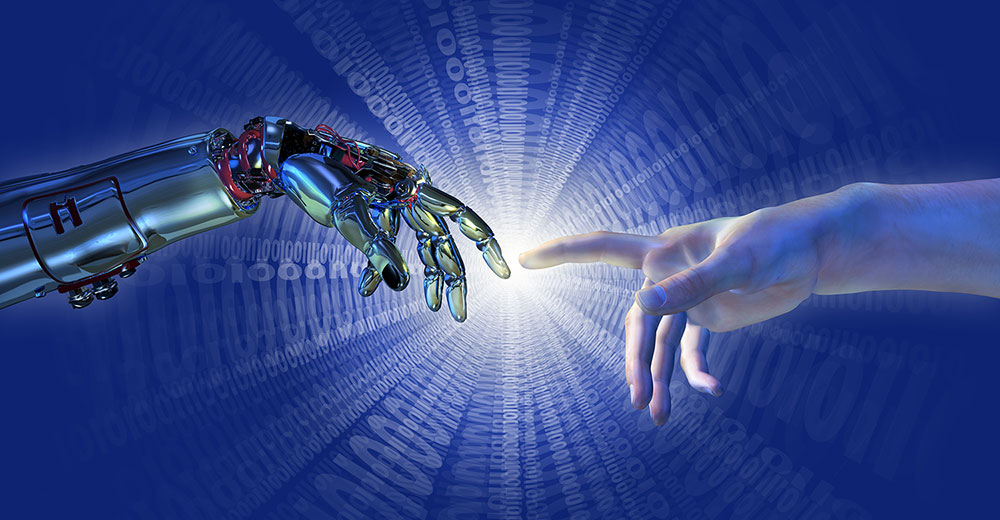A common challenge with using artificial intelligence in the workplace is that many employees lack proper training to use AI effectively.
According to Microsoft’s and LinkedIn’s 2024 Work Trend Index on the State of AI at Work, released in May, only 39% of AI users receive workplace training. The report identifies four categories of workers: skeptics, reluctant users, poorly or untrained users, and power users.
Power users, who comprise 78% of this last category, may pose the greatest challenge for IT departments. They often bring their own AI tools to work to improve job performance. In smaller companies, 80% of these power users use AI connections discreetly, without IT’s awareness.
As AI reshapes work environments, its most significant potential lies in enhancing the human skills that define employee performance — creativity, collaboration, and problem-solving, noted Juan Betancourt, CEO at Humantelligence. His company develops individualized training strategies to better train leaders and their workers to integrate AI safely and efficiently.
With so few workers getting real on-the-job training to employ AI, he urges companies to close this crucial training gap. Humantelligence software integrates into organizations’ workflows. The training and the plug-in platform combine to cultivate a learning environment that accelerates career growth and business innovation, he explained.
Betancourt says the training concept has been well received when pitched to business leaders but has seen slow adoption rates so far. He describes Humantelligence’s approach as AI-based and unique compared to other solutions.
“Only one in five companies to whom we present it ends up buying the product, which is shocking. Once they buy it, they love it,” Betancourt told TechNewsWorld.
How AI Is Reshaping the Workplace
The Microsoft-LinkedIn AI usage report revealed that many employees quietly use AI tools without proper guidance or clearance from leadership.
The research is based on a survey of 31,000 people across 31 countries, labor and hiring trends on LinkedIn, trillions of Microsoft 365 productivity signals, and research with Fortune 500 customers. The results show how, in one year, AI is influencing how people work, lead, and hire worldwide.
For example, 52% of employees who use AI at work are reluctant to admit they rely on it for critical tasks. Additionally, 53% worry that using AI for important tasks might make them seem replaceable.
The report suggests that companies miss out on its full benefits by not embracing AI strategically. This lack of oversight also increases the risk of compromised company data, as leadership focuses on cybersecurity and privacy concerns.
“AI is redefining work, and it’s clear we need new playbooks,” said LinkedIn CEO Ryan Roslansky in an announcement about the survey’s results.
He added that leaders who prioritize agility over stability and invest in internal skill-building will give their organizations a competitive advantage and create more efficient, engaged, and equitable teams.
Tailoring AI Training to Diverse Learning Styles
Learning styles differ. Some people might learn conceptually, not with examples and data-driven results. Others might like to learn independently, figuring things out on their own. Betancourt explained that some people like tinkering with the answers, and others like classroom environments with groups so they can ask questions.
With so many different learning styles, Humantelligence’s tool identifies every individual’s learning style. The company’s AI-based training platform and maintenance methods are unique because they allow training through individually prescribed approaches.
“We do that at an individual level,” he offered. “It’s much more involved than just how to handle the chat box dealing with incoming calls and the live agents. It’s much more compliant.”
That provides diversification for training groups of people. For instance, he noted, the way you train all the call center agents who have a particular type of profile in terms of their psychometrics, behaviors, and motivators is very different from how the work styles, training framework, and content are delivered to the accounting, finance, and sales departments.
“Our tool works for AI training in all industries. It is less verticalized by industry and more verticalized by every person. Our tool, although delivered by the company, allows people to train all employees,” he said, adding that workers’ existing skill levels do not matter.
Continuous AI Training
Humantelligence’s new training product is all about teaching workers to use AI in their jobs. The product focuses solely on teaching workers how to use AI in their jobs, not on other training objectives. However, the AI-driven feature that identifies workers’ inherent learning styles also supports various training objectives.
Instead of offering a one-time, workshop-based solution, the software development firm provides a tool for ongoing optimization. It ensures that 90% of the company’s workforce receives continuous training across any platform or delivery method every day, every week.
“We operationalize insights with Al. So that is a huge difference that AI allows the training to happen at the right time for the right person when they need it at that moment,” added Betancourt.
Since starting Humantelligence in 2016, its focus has evolved as businesses’ needs have changed. The pathway followed developing workplace solutions that morphed through pre-to-post Covid circumstances, leading to the AI explosion that started nearly two years ago.
“We have four phases of the company, so we’ve pivoted three times from the original idea of what we were doing. AI has only been the most recent version of what we do,” Betancourt shared.
Adapting AI to Evolving Business Needs
The start-up’s initial mission was to use psychometric insights on employees to learn why people perform based on their psychology. The psychometric tool provided data on the behaviors of high performers versus low performers and provided an inkling of the different motivations driving their work styles.
During the company’s first four years, that insight ranking product became a recruiting tool based on algorithmic matching. Sort of a light AI back then, the results allowed companies to select from the top five matches out of thousands of applicants for a position in any company.
Then Covid hit, and Humantelligence lost all revenue. Nobody was using software to hire. Nobody was hiring, lamented Betancourt.
The shift in business needs led to the first pivot — developing a platform for culture management. The platform used psychometric analysis to assess existing employees, which helped leaders and co-workers see an aggregate of their team’s culture or dynamics. This insight resulted in tips on managing or collaborating better within a team.
“After two years, we integrated, kind of like Grammarly is integrating its workflows. We integrated this culture management, all those email insights into Teams, into Slack, so that while you are in any platform from communicating or collaborating, you could pull up a profile,” Betancourt said of the transition to the next pivotal platform.
The final pivot resulted from AI’s advancements over the last 18 months. AI provides a tool for delivering exact insights for each person in any environment. Hence, Humantelligence built a better process for companies to train their workers to use AI.
Barriers to AI Adoption in the Workplace
According to Betancourt, there are specific reasons why prospective customers do not move forward after expressing positive reactions in presentations about the software.
“It is expensive. It is more budget. They do not know the ROI,” he reasoned. “You can’t put a number for return on investment on people will learn quicker or learn better.”
Ironically, despite loving all the insights on training, some companies do not want them delivered through AI. They ask for a version with all the insights but delivered manually, he added.
“They want it to be more hand-fed,” he quipped.
Another challenge is the lack of leadership structure to handle AI. Financing the training often falls between the CIO and CTO, creating budgeting issues.
“We’re plugging into communication and collaboration platforms. That is all under the CTO, but training sits under HR. So, one of the problems is there is no head of AI training. There is no Chief AI Officer,” he noted.











